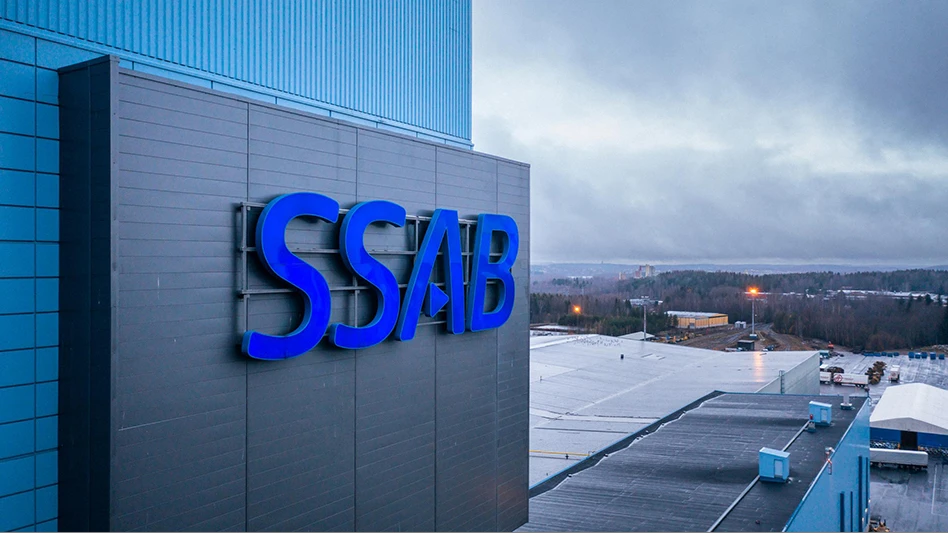
Photo courtesy of SSAB
Sweden-based metals producer SSAB, which operates a recycled-content electric arc furnace (EAF) carbon steel mill in Iowa and a recycled-content stainless mill in Alabama, has reported profits for this year’s third quarter that are down from one year ago and compared with the previous quarter.
SSAB’s $99 million income this summer compares with more than $336 million one year ago and about $228 million in this year’s second quarter, and lower United States plate prices impacted results negatively compared with last year.
“Demand for heavy plate was lower and market prices saw a negative trend. Inventory levels at North American distributors were still low, but distributors were generally cautious against a backdrop of falling market prices," SSAB says of its North American operations.
“The market in Europe continued to be weak, whereas the market for high-strength steel was more resilient. Compared to the second quarter, the lower operating result was due to weaker demand and planned maintenance outages.”
The company's Special Steels business unit, which includes the mill in Alabama, had an operating margin of 18 percent during the third quarter, down from 23 percent one year earlier.
In comments accompanying its third quarter results regarding decarbonization, SSAB states, “There is strong demand for steel with no carbon dioxide footprint and SSAB has entered into a large number of partnerships with major customers,” with the company mentioning Alstom and Trelleborg.
“During 2023, SSAB launched a new scrap-based steel, SSAB Zero, with 0.0 kilogram (kg) of carbon dioxide equivalent emissions (Scope 1 and 2) per kg of steel—the world's first commercial product of its kind."
The company's conversion of its blast furnace/basic oxygen furnace (BOF) steel mill in Oxelösund,
Sweden, to fossil-free steelmaking and the construction of the new EAF is proceeding according to plan.
SSAB also refers to its announcement this April to replace its BOF technology in Luleå, Sweden, with two EAFs capable of producing 2.5 million metric tons of steel per year.
“Compared with the third quarter of 2024, SSAB Special Steels’ shipments are assessed to be somewhat lower during the fourth quarter; also, prices are expected to be somewhat lower,” the company says. “The costs of raw materials for SSAB Special Steels are expected to be somewhat lower compared to the prior.”
In Iowa, SSAB Americas’ shipments are expected to be higher in this year’s fourth quarter compared with the third, and for SSAB Americas, the cost of scrap is expected to be somewhat higher in the final three months of 2024 compared with the summer months.
Latest from Recycling Today
- BMW Group, Encory launch 'direct recycling’ of batteries
- Loom Carbon, RTI International partner to scale textile recycling technology
- Goodwill Industries of West Michigan, American Glass Mosaics partner to divert glass from landfill
- CARI forms federal advocacy partnership
- Monthly packaging papers shipments down in November
- STEEL Act aims to enhance trade enforcement to prevent dumping of steel in the US
- San Francisco schools introduce compostable lunch trays
- Aduro graduates from Shell GameChanger program





